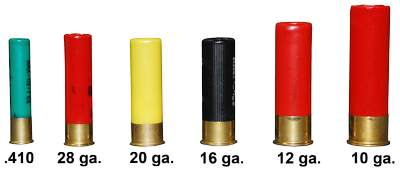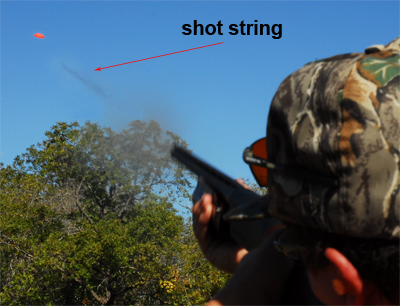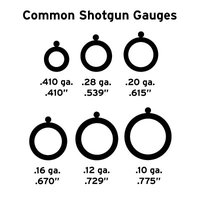Shotgun Ammunition: Shotshells

Common Gauges
U.S law requires the use of non-toxic (steel, bismuth, tungsten, etc) while hunting waterfowl!
Lead shot which was used for many years was contaminating wetlands and waterfowl.
Shot Identification Chart

Check state or provincial regulations to determine legal ammunition.
Hunters will find that lead and steel shot perform differently. When hunting waterfowl, a larger size of shot will be more effective.
|
Type of shot |
Sizes |
||||
|
Lead |
6 |
4 |
2 |
||
|
Steel |
6-4 |
2 |
BBB |
BB |
T |
Steel - lighter, keeps its shape after firing, narrower pattern doesn't carry as far, shorter shot string.
Lead - heavier, flattens and deforms, wider pattern, carries farther, longer shot string.
Selecting a Shotgun
Recoil: The larger the gauge or the heavier the load, the greater the recoil.
Break action shotguns transfer more energy back through the stock and "kick" harder. Lighter guns also seem to "kick" harder. Semi-automatics absorb some of the recoil.
Common Shotgun Gauges
(not to scale)
Shot String
When the cluster of shot leaves the barrel, it travels in a string which begins to spread in length and diameter as it encounters wind resistance and the pull of gravity. This diameter can be influenced by the choke of the barrel.
